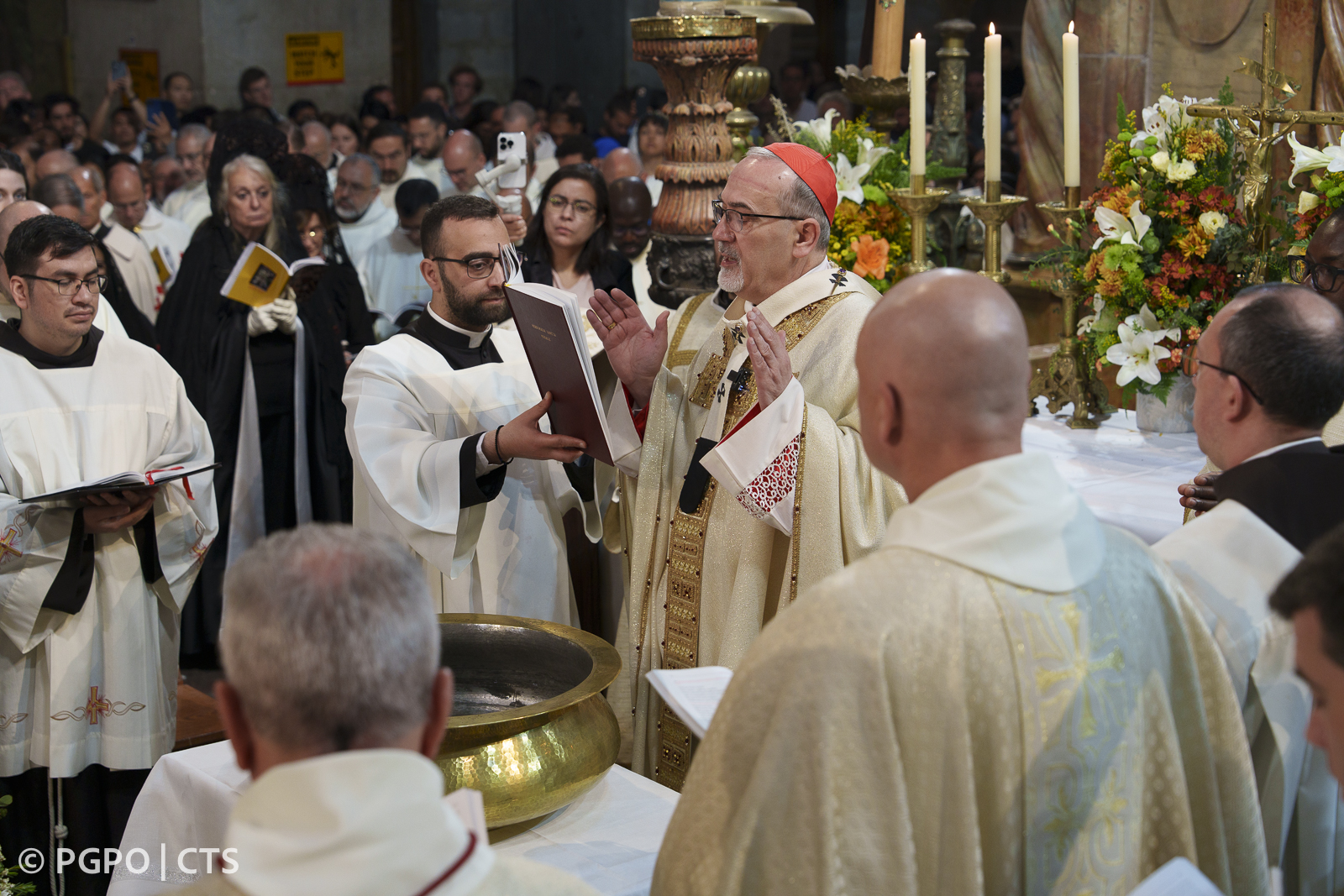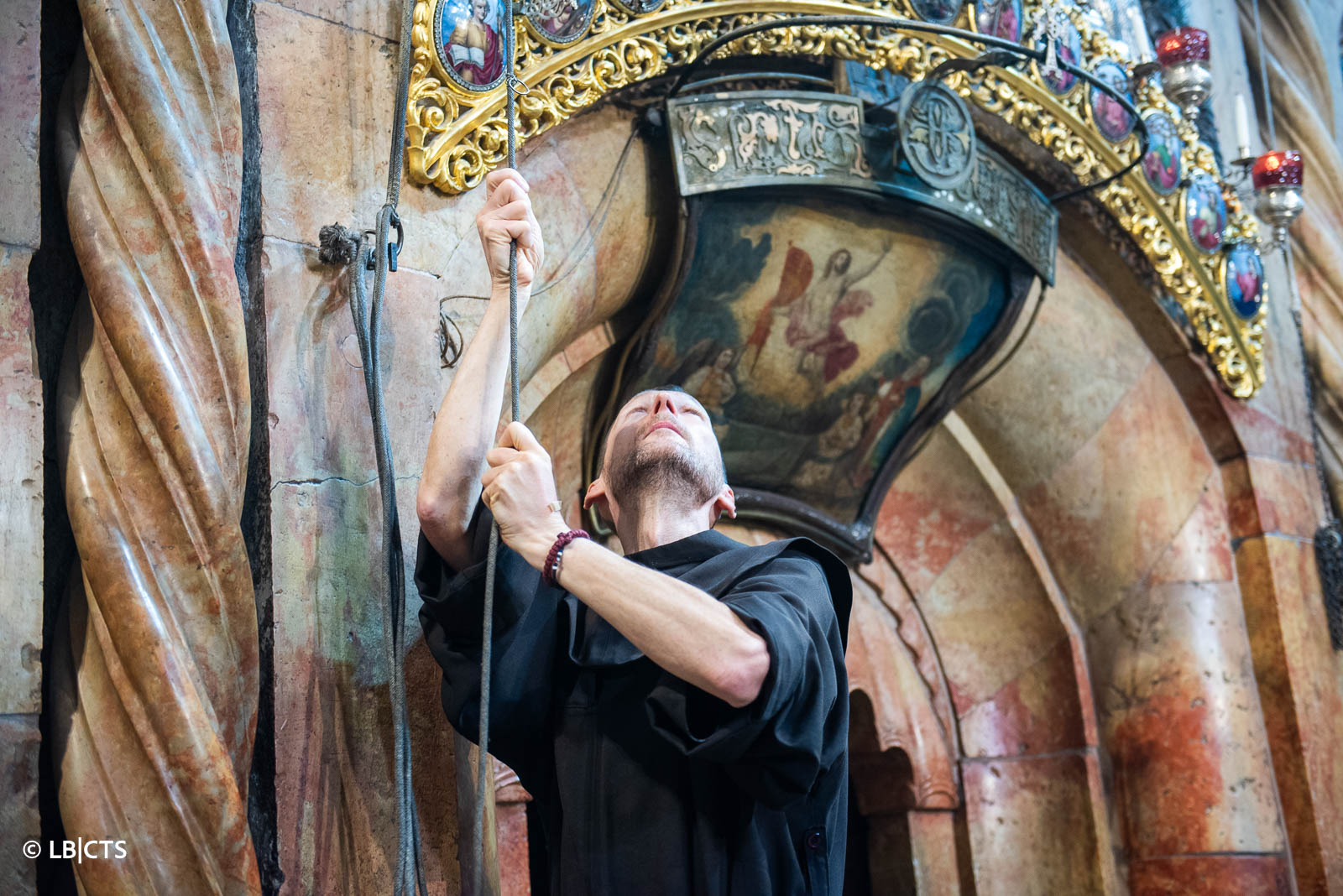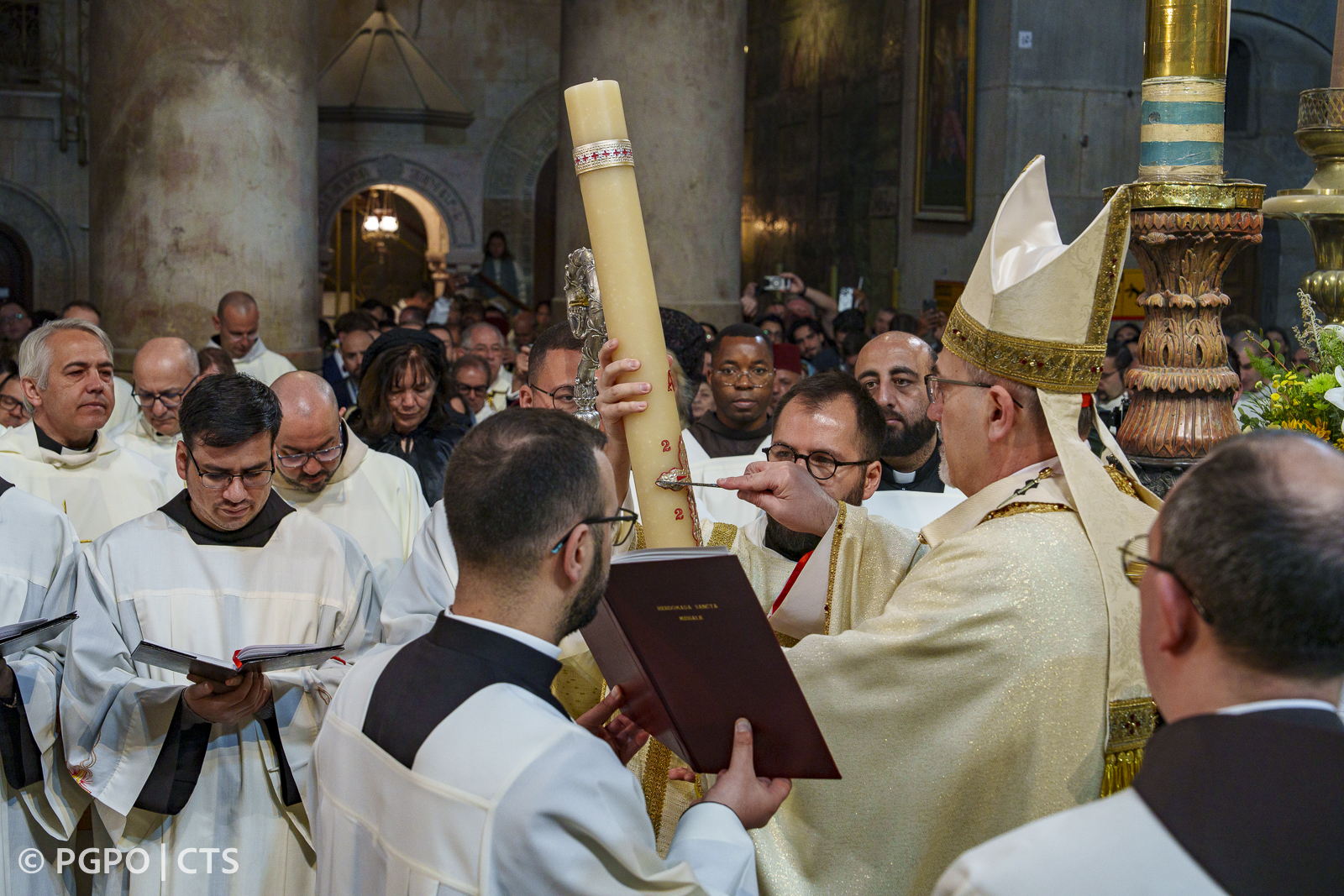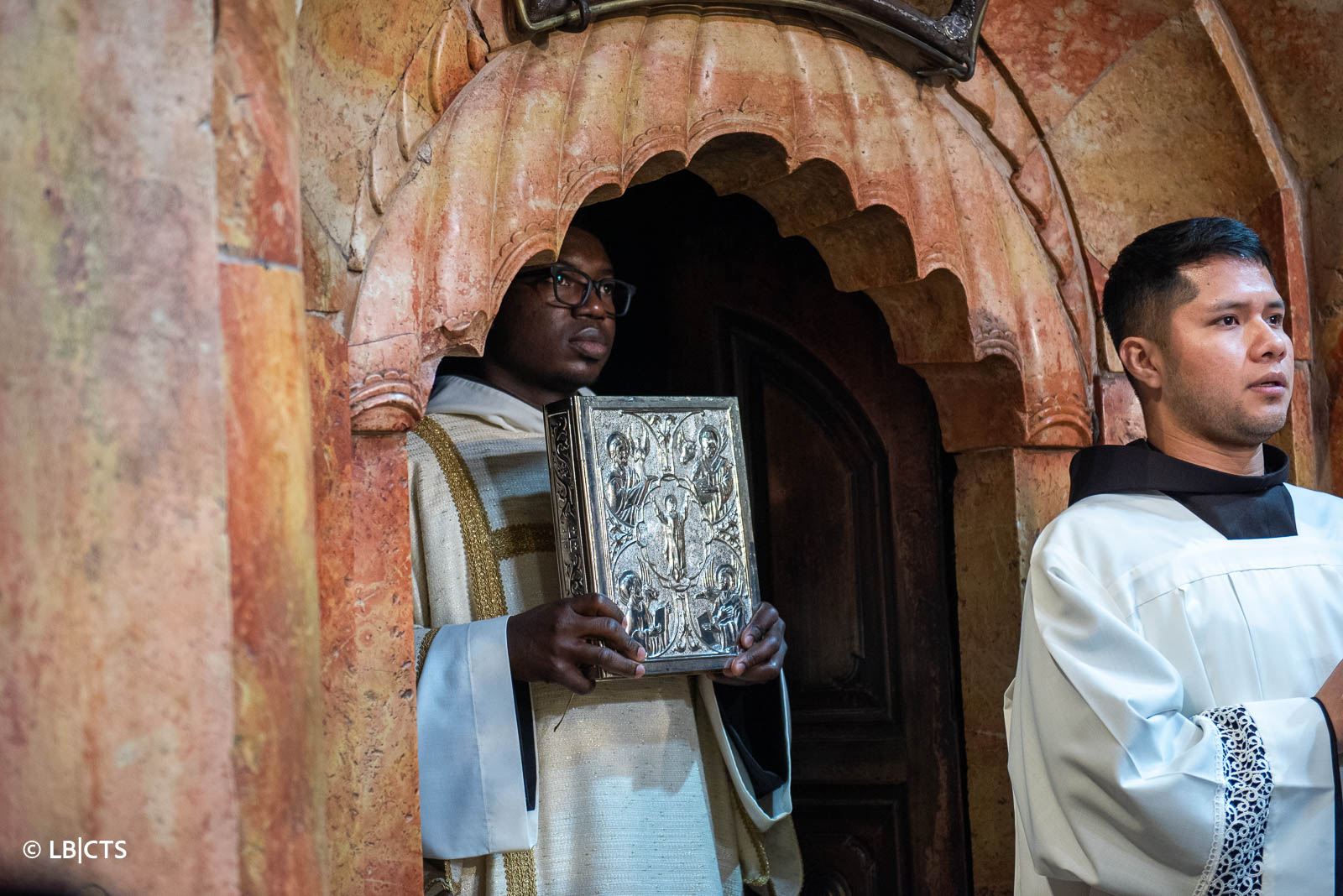
In the early hours of the morning of Saturday 19 April, the bells of the Holy Sepulchre broke the silence of the night, announcing the Resurrection of Christ. It is Easter in Jerusalem, and in the heart of Christianity, where Christ defeated death, the solemn Easter Vigil is celebrated.
Due to the Status Quo, which regulates the celebrations between the various Christian confessions which share the space of the Basilica, the Vigil in Jerusalem takes place earlier than the rest of the Catholic world. This gives the celebration a unique character, to the extent that it is considered the ”mother of all vigils.”

This year, since the celebration of the Catholic Easter coincides with that of the Orthodox Churches, at the end of the vigil, the friars quickly cleared the space in front of the Edicule to allow the Greek Orthodox to get ready for the celebration of the “Holy Fire.”
The liturgy was presided over by the Latin Patriarch of Jerusalem, Cardinal Pierbattista Pizzaballa, together with numerous concelebrants, in front of a large crowd of faithful gathered around the Edicule of the Holy Sepulchre.
In his homily, the Patriarch emphasised the importance of the Easter event: "We believe that on Easter morning a great new thing has finally happened. The women go to the tomb and search for Jesus in the realm of death, [...] But that place of death is deserted. In place of Jesus' body are two men dressed in light, who announce that Jesus is alive (Lk 24:5), they announce that the new man has been born."

The rite developed in four main parts. The celebration began with the liturgy of the light, in front of the entrance to the Basilica, with the lighting of the Paschal candle, the symbol of the glory of the Risen Christ.
It then continued with the liturgy of the Word which, through nine biblical readings, went over the story of the salvation and the promise of eternal life. The readings were done by the Franciscan friars and seminarians of the Latin Patriarchate.
This was followed by the baptismal liturgy, which offered all those present the occasion to renew their vows, renouncing evil and once again professing the faith. Lastly, with the Eucharist, the faithful partook in the Lord’s table, regenerated in the baptism.

A particularly significant moment was the proclamation of the Gospel of the Resurrection, which the Patriarch of Jerusalem makes. With this gesture, the bishop of the Holy City gives makes the announcement that Christ has risen to the whole world.
"This is the meaning of the resurrection of Jesus for us - the Patriarch concluded - and this is the meaning of Easter, in every age, until today, and this is what we celebrate today: the faithfulness of God's love, a love that overcomes even death, and that restores to us the dignity of children of God, free and loved forever."

Lucia Borgato
